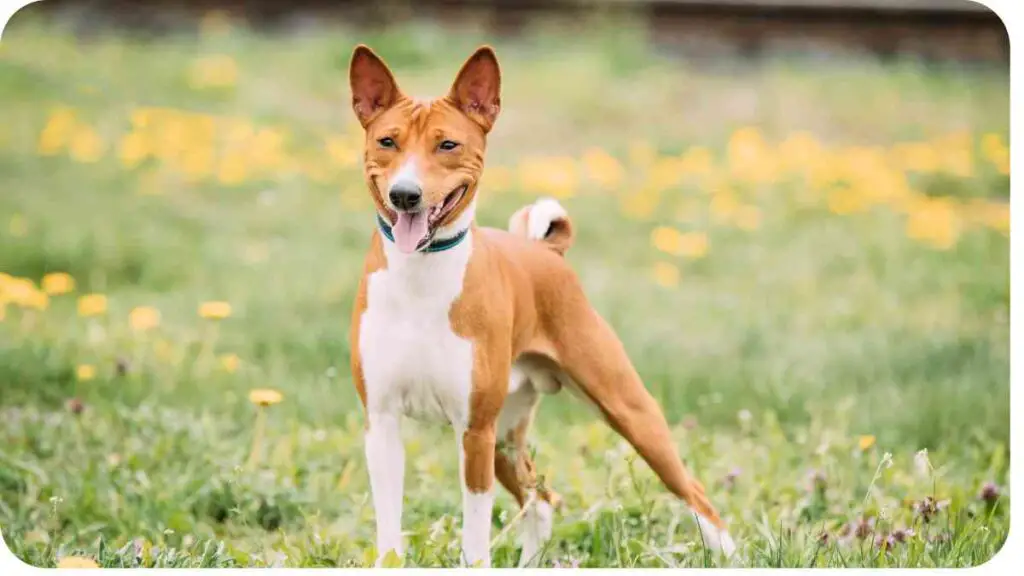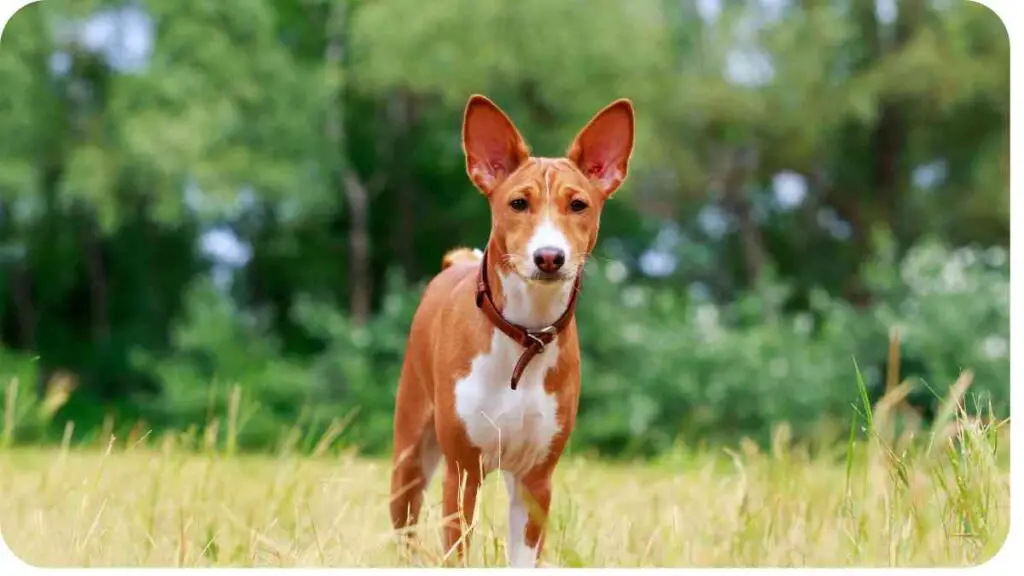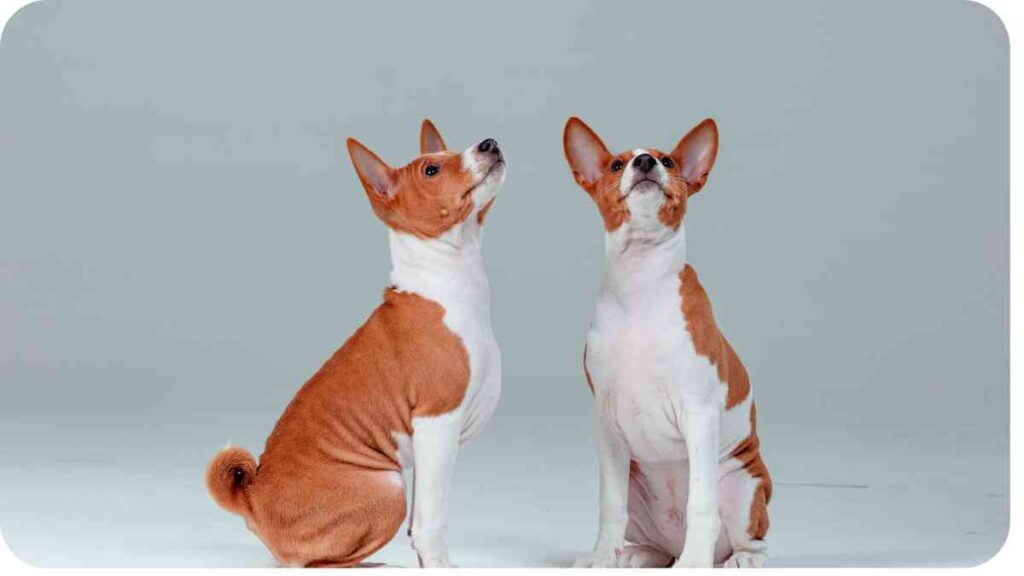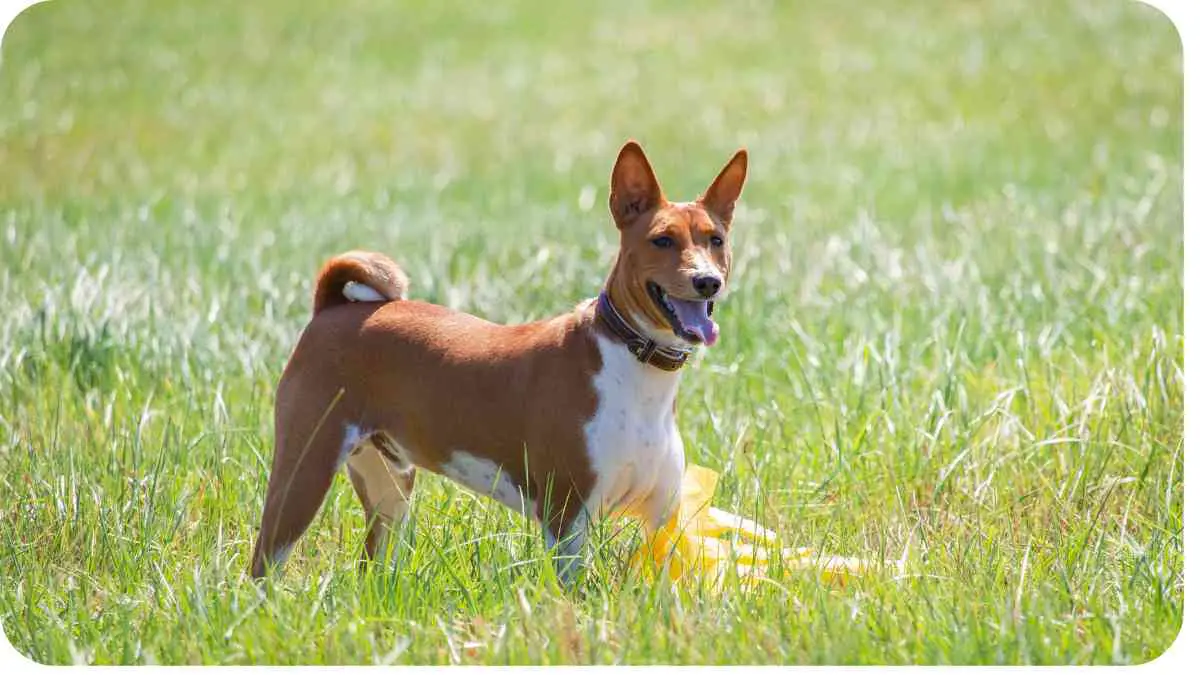Welcome to our comprehensive guide on the Basenji dog breed! If you’re considering adding a Basenji to your family or simply want to learn more about this fascinating canine companion, you’ve come to the right place.
In this article, we’ll delve into the rich history, unique characteristics, temperament, training tips, exercise needs, health considerations, and even explore how Basenjis have made their mark in popular culture. So, let’s embark on this exciting journey together as we uncover all there is to know about the ancient and unique Basenji breed.
| Takeaways |
|---|
| 1. Basenjis are one of the oldest dog breeds with roots in ancient Africa. |
| 2. They are known for their distinctive appearance, including a sleek coat, curled tail, and unique vocalization. |
| 3. Basenjis are intelligent, independent, and spirited dogs that require consistent training and socialization. |
| 4. Regular exercise and mental stimulation are essential for keeping Basenjis happy and healthy. |
| 5. Basenjis may be prone to certain health issues, so regular veterinary care and a balanced diet are important. |
| 6. Basenjis have made their mark in popular culture through appearances in movies, TV shows, and with famous owners. |
| 7. Understanding the unique traits and needs of Basenjis can help prospective owners make informed decisions about bringing one into their family. |
History of the Basenji Breed

The Basenji is one of the oldest dog breeds in the world, with roots tracing back to ancient Africa. These dogs were highly prized by the ancient Egyptians for their hunting prowess and were often depicted in hieroglyphics and artifacts.
Basenjis were originally bred to assist hunters in tracking and flushing out game in the dense jungles of Central Africa, where their keen senses and agility made them invaluable companions. Over time, they gained the nickname “barkless dog” due to their unique vocalization, which is more of a melodic yodel than a traditional bark.
Exploring the ancient and unique Basenji dog breed reveals a fascinating history of a breed known for its barkless nature and African origins. This breed showcases diverse breeds can have distinct characteristics.
| Time Period | Description |
|---|---|
| Ancient Africa | Basenjis were revered hunting companions in Africa. |
| Egyptian Depictions | Basenjis were often depicted in ancient Egyptian art. |
| Introduction to the West | Basenjis were introduced to the West in the early 20th century. |
Physical Characteristics
Basenjis are distinctive in both appearance and temperament. Let’s take a closer look at their physical characteristics:
Size and Weight
Basenjis are a medium-sized breed, with adult males typically standing between 17 to 18 inches at the shoulder and weighing around 24 to 26 pounds. Adult females are slightly smaller, usually measuring between 16 to 17 inches and weighing around 22 to 24 pounds. Despite their relatively small stature, Basenjis are well-proportioned and muscular, with a sleek and elegant build that belies their strength and agility.
Coat and Colors
One of the most striking features of the Basenji is its short, dense coat, which lies close to the body and requires minimal grooming. The breed comes in a variety of colors, including red, black, tricolor, and brindle, often with white markings on the chest, feet, and tail tip. Basenjis have a distinctive wrinkled forehead and a curled tail that rests tightly against their back.
Guard dog breeds are essential for home protection. Through top guard dog breeds, one can understand which breeds excel in this role, providing security and companionship to their owners.
Unique Features
In addition to their sleek coat and elegant physique, Basenjis possess several unique features that set them apart from other breeds. One of the most notable characteristics is their tightly curled tail, which gives them a regal and distinctive appearance. Basenjis also have a distinctive “baroo” vocalization, which is a combination of a yodel and a howl, rather than a traditional bark. This unique vocalization is a remnant of their hunting days and is often used to communicate with their owners and other dogs.
Temperament and Behavior

Basenjis are known for their intelligent, independent, and spirited nature. Here’s a closer look at their temperament and behavior:
Intelligence
Basenjis are highly intelligent dogs with a keen sense of curiosity and problem-solving ability. However, their intelligence can sometimes manifest as stubbornness, particularly when it comes to training. It’s important for Basenji owners to provide consistent, positive reinforcement training from a young age to channel their intelligence into productive behaviors.
Independence
Due to their history as independent hunters, Basenjis have a strong streak of independence and self-reliance. They are not as inherently eager to please their owners as some other breeds, which can make training more challenging. However, with patience, consistency, and positive reinforcement, Basenjis can excel in obedience training and other canine sports.
Selecting hypoallergenic dog food is crucial for dogs with skin issues. Understanding dietary considerations ensures dogs lead healthy, comfortable lives free from allergic reactions.
Vocalization
One of the most unique aspects of the Basenji breed is their distinctive vocalization, which is often described as a yodel or a howl. Unlike most dogs, Basenjis are not prone to incessant barking, although they are not completely silent either. Instead, they use their vocalization to communicate with their owners and other dogs, especially when they are excited or alert.
Socialization
Like all dogs, Basenjis benefit from early socialization to help them develop into well-adjusted and confident adults. Exposing them to a variety of people, animals, sights, and sounds from a young age can help prevent shyness or aggression later in life. Additionally, regular exercise and mental stimulation are essential for keeping Basenjis happy and healthy.
Basenji Training Tips
Training a Basenji requires patience, consistency, and positive reinforcement. Here are some tips to help you effectively train your Basenji:
Positive Reinforcement
Basenjis respond best to positive reinforcement training methods, which involve rewarding desired behaviors with treats, praise, or playtime. Avoid harsh punishment or scolding, as this can cause your Basenji to become fearful or resentful. Instead, focus on rewarding good behavior and redirecting unwanted behaviors with gentle correction.
Consistency
Consistency is key when training a Basenji. Establish clear rules and boundaries from the beginning and enforce them consistently. Use the same commands and cues each time you ask your Basenji to perform a behavior, and be patient if it takes them a little longer to catch on. With time and repetition, your Basenji will learn what is expected of them.
Hybrid dog breeds offer unique combinations of traits and personalities. Learn about the energetic Australian Shepherd Golden Retriever hybrid and how this mix blends the best of two popular breeds.
Socialization
Early and ongoing socialization is crucial for Basenjis to develop good manners and positive interactions with people and other animals. Introduce your Basenji to new experiences, environments, and individuals in a controlled and positive manner. This will help prevent fearfulness, aggression, or other behavioral issues later in life.
Mental Stimulation
Basenjis are intelligent and energetic dogs that thrive on mental stimulation. Keep your Basenji engaged and entertained by providing plenty of interactive toys, puzzle games, and training activities. Consider enrolling them in obedience classes, agility courses, or other canine sports to keep their minds sharp and their bodies active.
Exercise Needs
Basenjis are a high-energy breed that requires plenty of daily exercise to stay happy and healthy. Provide your Basenji with opportunities for both physical and mental stimulation, such as brisk walks, runs in a fenced yard, or play sessions with other dogs. Without adequate exercise, Basenjis may become bored, restless, or even destructive.
Exercise Needs
Basenjis are an active and energetic breed that requires plenty of daily exercise to stay happy and healthy. Here are some tips for meeting your Basenji’s exercise needs:
Mental Stimulation
In addition to physical exercise, Basenjis also need plenty of mental stimulation to keep their minds sharp and engaged. Provide your Basenji with puzzle toys, interactive games, and training sessions to challenge their intellect and prevent boredom. Consider teaching them new tricks or enrolling them in canine sports such as agility or obedience competitions.
Physical Activity
Basenjis are natural athletes with a high level of energy and stamina. Aim for at least 30 to 60 minutes of moderate to vigorous exercise each day to keep your Basenji physically fit and mentally satisfied. Activities such as brisk walks, jogs, hikes, or play sessions in a fenced yard are ideal for burning off excess energy and preventing boredom.
Beagle behavior in packs is an intriguing aspect of their social nature. Explore the dynamics of Beagles in packs to gain insight into their pack mentality and how it influences their behavior.
Playtime Ideas
Get creative with your Basenji’s playtime by introducing new toys, games, and activities to keep them entertained. Try playing fetch with a ball or frisbee, setting up an obstacle course in your backyard, or going for a swim at a dog-friendly beach or pool. Be sure to rotate your Basenji’s toys regularly to keep them engaged and excited about playtime.
Health Considerations
Like all dog breeds, Basenjis are susceptible to certain health issues. Here’s what you need to know about caring for your Basenji’s health:
Common Health Issues
While Basenjis are generally a healthy and hardy breed, they are prone to certain genetic health conditions that prospective owners should be aware of. Some common health issues in Basenjis include:
| Health Condition | Description |
|---|---|
| Fanconi Syndrome | A hereditary kidney disease that affects the ability to absorb glucose, electrolytes, and other nutrients. Symptoms may include increased thirst and urination, weight loss, and lethargy. |
| Progressive Retinal Atrophy (PRA) | A degenerative eye disease that can lead to vision loss and blindness. Regular eye exams are recommended for Basenjis to monitor for signs of PRA. |
| Hip Dysplasia | A common orthopedic condition where the hip joint doesn’t develop properly, leading to pain and mobility issues. Maintaining a healthy weight and providing regular exercise can help prevent hip dysplasia. |
| Hypothyroidism | A thyroid disorder that can cause weight gain, lethargy, hair loss, and skin problems. Basenjis with hypothyroidism may require lifelong medication to manage their condition. |
Veterinary Care
Regular veterinary check-ups are essential for maintaining your Basenji’s health and detecting any potential issues early on. Your veterinarian can provide guidance on vaccinations, parasite prevention, dental care, and nutrition tailored to your Basenji’s specific needs. Be sure to schedule annual wellness exams and follow your vet’s recommendations for preventive care.
Diet and Nutrition
Providing a balanced and nutritious diet is crucial for keeping your Basenji healthy and happy. Choose a high-quality dog food that is appropriate for your Basenji’s age, size, and activity level. Avoid overfeeding and monitor your Basenji’s weight to prevent obesity, which can exacerbate health issues such as hip dysplasia and hypothyroidism. Additionally, be mindful of any food allergies or sensitivities your Basenji may have and select food accordingly.
Basenji in Popular Culture

Basenjis have captured the hearts of dog lovers around the world and have even made their mark in popular culture. Let’s explore how Basenjis have been portrayed in movies, TV shows, and through famous owners:
Movies and TV Shows
Basenjis have been featured in various films and television shows over the years, often showcasing their unique appearance and personality. One of the most famous Basenjis in film is “Goodbye, My Lady,” where a Basenji named Lady steals the show with her intelligence and charm. Additionally, Basenjis have made appearances in TV shows such as “The Brady Bunch” and “Homeward Bound II: Lost in San Francisco.”
Famous Owners
Several notable celebrities have been proud owners of Basenjis over the years, further elevating the breed’s popularity and reputation. Actress Audrey Hepburn was known for her love of Basenjis and often featured her beloved pets in photo shoots and public appearances. Similarly, singer and actress Eartha Kitt was a devoted Basenji owner and advocate for the breed’s unique qualities.
Conclusion
In conclusion, the Basenji is a truly unique and fascinating dog breed with a rich history, distinctive physical characteristics, and spirited temperament. Whether you’re drawn to their ancient origins, sleek appearance, or intelligent nature, Basenjis have much to offer as loyal and loving companions.
If you’re considering adding a Basenji to your family, be prepared for a lively and independent companion who will keep you on your toes with their boundless energy and curiosity. With proper training, socialization, and care, Basenjis can thrive in a variety of environments and make wonderful pets for individuals and families alike.
Remember to prioritize your Basenji’s health and well-being by providing regular veterinary care, a balanced diet, plenty of exercise, and lots of love and attention. By understanding and meeting your Basenji’s needs, you can ensure a happy and fulfilling life together for many years to come.
If you’re already a proud Basenji owner, we hope this guide has provided valuable insights and tips for caring for your beloved pet. And if you’re considering bringing a Basenji into your life, we hope this article has inspired you to learn more about this ancient and unique breed.
Frequently Asked Questions (FAQs)
Q: Are Basenjis good family pets?
A: Basenjis can make wonderful family pets for households that understand and appreciate their unique traits. They are generally good with children and other pets but may require early socialization and training to ensure they get along well with others.
Q: Do Basenjis shed a lot?
A: Basenjis have a short, dense coat that sheds minimally compared to other breeds. However, they do shed seasonally, so regular grooming and brushing can help minimize loose hair around the home.
Q: Are Basenjis easy to train?
A: Basenjis are intelligent dogs but can be independent and stubborn at times, which can make training a challenge. However, with patience, consistency, and positive reinforcement, Basenjis can learn to obey commands and perform tricks effectively.
Q: Do Basenjis bark?
A: Basenjis are often referred to as “barkless dogs” because they don’t bark in the traditional sense. Instead, they produce a unique vocalization known as a “baroo,” which is more of a yodel or howl. However, Basenjis can still vocalize in other ways, such as whining, growling, or grumbling.
Q: How much exercise do Basenjis need?
A: Basenjis are an active and energetic breed that requires plenty of daily exercise to stay healthy and happy. Aim for at least 30 to 60 minutes of moderate to vigorous exercise each day, including brisk walks, runs, play sessions, and mental stimulation activities.
Further Reading
For more information on Basenjis, check out these resources:
- Fun Facts About Basenjis: Explore interesting facts and trivia about the Basenji breed, including their history, unique characteristics, and famous owners.
- The Barkless Dog: Basenji: Learn about the fascinating trait that sets Basenjis apart from other breeds—their unique vocalization and why they’re often referred to as “barkless dogs.”
- Basenji – The African Barkless Dog: Dive deeper into the origins, characteristics, and behavior of the Basenji breed with this comprehensive guide. Discover what makes these dogs so special and how to care for them as loving companions.
FAQs
Are Basenjis good apartment dogs?
Basenjis can adapt well to apartment living if their exercise and mental stimulation needs are met. However, they are an active breed that requires regular exercise and mental stimulation to prevent boredom and destructive behaviors.
Do Basenjis shed a lot?
Basenjis have a short, dense coat that sheds minimally compared to other breeds. However, they do shed seasonally, so regular grooming and brushing can help minimize loose hair around the home.
Are Basenjis good with children?
Basenjis can be good with children, but early socialization and training are important to ensure positive interactions. Supervision is recommended, especially with younger children, as Basenjis may not tolerate rough handling or excessive noise.
Do Basenjis bark?
Basenjis are often referred to as “barkless dogs” because they don’t bark in the traditional sense. Instead, they produce a unique vocalization known as a “baroo,” which is more of a yodel or howl. However, Basenjis can still vocalize in other ways, such as whining, growling, or grumbling.
How much exercise do Basenjis need?
Basenjis are an active and energetic breed that requires plenty of daily exercise to stay healthy and happy. Aim for at least 30 to 60 minutes of moderate to vigorous exercise each day, including brisk walks, runs, play sessions, and mental stimulation activities.

I’m Dr. Hellen James, I’ve spent my career working with dogs, and I’ve seen first-hand how important it is to understand the individual needs of each breed. I want to share my knowledge of dog breeds with you so that you can make informed decisions about which dog will be best for your household and lifestyle.

